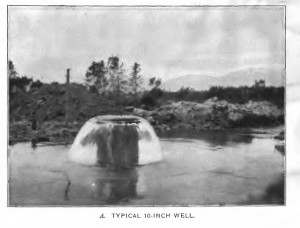From the beginning, it was clear that solving Southern California’s water problems would require “the best talent of the country”:
That’s Walter Mendenhall, from a series of U.S. Geological Survey papers published in 1905 inventorying the groundwater resources of the greater Los Angeles Basin’s groundwater resources (before we thought of it as “the greater Los Angeles Basin”). (Water Supply Papers 137, 138 and 139)
For my book, I’ve been tracing what we knew when about the viability of Southern California’s groundwater and the eventually need to import water that ultimately led southern California to build three great artificial rivers. By 1905, it was already clear that groundwater pumping in parts of the region was unsustainable. Here’s Mendenhall:
At these places, therefore, it is evident that there should be no further increase of the drafts upon the underground waters, and that the reclaiming lands from these as a source should cease.
Remarkably, given the urban landscape of the region today, this was farm country. In the Santa Monica area, Mendenhall inventoried 4,000 acres under irrigation. In the Redondo Beach area, there were another 3,280 acres being irrigated with sewage and 8,250 acres from wells. Already, overuse of groundwater and upstream diversions of the Los Angeles River (which fed the aquifer) were reducing the flow from artesian wells, forcing farmers to pump. But Mendenhall concluded that in the Santa Monica-Redondo area:
With continued reasonable use of the underground waters of this area, then, it may be concluded that although the remnant of the coastal plain artesian basin included in it will probably disappear, because the basin is especially sensitive to distant diversions and developments, the ground waters generally will not suffer a serious permanent shrinkage.
Like much that you read from that time, it was clear more water was needed for agricultural development in the arid West. The notion of a great city, of suburban lawns spreading to the horizon? Not so much. But however they were planning on using the water, it was clear from Mendenhall’s time that there was a problem.


